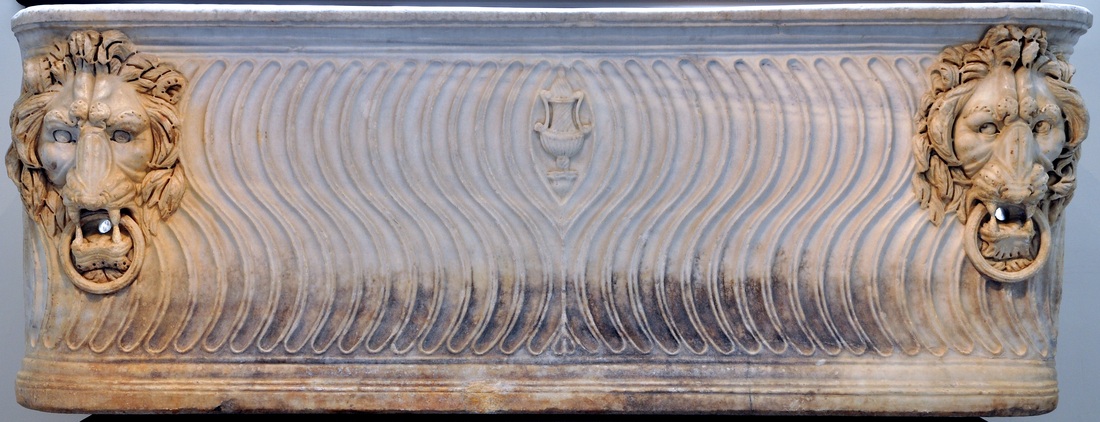|
Why does this sarcophagus have rounded ends? Why the lions' heads, and why are they chomping on rings? Because — and you'll probably think this kooky — this sarcophagus is carved in the shape of a wooden wine vat. The rounded ends are characteristic of the large tubs in which Romans pressed grapes to make wine. More importantly, so are the lions: we know from ancient depictions of actual Roman wine troughs that they often carried fancy felines' heads, carved in relief near the ends of the vat. These served as elaborate (and humorous) decoration for the spigots (!) installed in their mouths: wine flowed from the ferocious maws of lions — if you dared to put your hand directly between their jaws to open the tap. They met other functional needs as well. The metal rings used as handles for hoisting and dragging the vat had to be embedded in something; and ideally that something would project outward from the rest of the tub, to make carrying easier. These leonine bosses thus served as anchors for carrying handles ("Think you can handle a lion? Now you can!") as well as fanciful frames for spigots. Here the form of one of those elaborate wine tubs has been translated into stone, to hold very different contents. This was a popular format for sarcophagi: many elite Romans commissioned this style of coffin, particularly during the third century. Just imagine a wealthy businessman or an important Senator choosing a stone-imitation wine vat as his vessel for eternity. This would be unthinkable for us. But it was entirely unproblematic for Romans, who so often — unlike us — preferred to meet death with humor. As a side note.... you'll observe that the marble from which this sarcophagus was carved has several bands of darker color that run through the stone. There's a wide, very dark band near the bottom; and a set of lighter, blue-gray bands that run across the top. That's a characteristic feature of marble quarried on the island of Proconnesus (now Marmara), not too far from Istanbul, in modern-day Turkey. It was a popular choice of stone for Roman sarcophagi in the third century. You might think it an odd choice, given how far Proconnesus is from Rome. But transport by sea was far easier and faster than transport over land in antiquity. And the quarries on the island were close to the water — unlike the quarries of Italy. As a result, shipping marble all the way from Turkey to Rome was actually cheaper than using marble from Italy itself. Comments warmly invited. (Both the Facebook system below, and the traditional comment form, work dandily.) |
Roman
|


